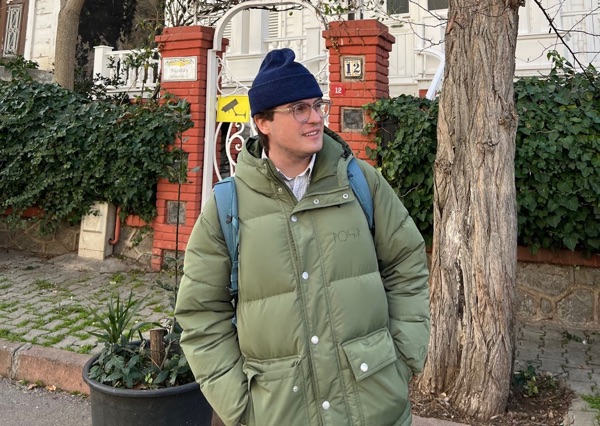In this interview with Hyperight, Egor Kolpakov, Project Engineer at Danfoss, shares his professional background and current focus on Machine Learning utilization and Data Science. He discusses his presentation at the eighth edition of the Data Innovation Summit, where he will be speaking about “Trial and Error Method: Approaching Big Data Project for Mini EEV Lifetime Prediction”. Egor talks about the necessity for research in this field to reduce testing time, and gain a better understanding of products. He also shares insights into the challenges faced during the project, emphasizing the importance of evaluating data quality and the usefulness of implementing a trial and error approach. Egor believes that shorter testing time with good quality is very valuable, and his project could serve as an entry-level business case for other organizations. Finally, he discusses upcoming trends in data management, analytics, and AI, including more use of synthetic data for ML models and LLM, which is a hot topic.
Hyperight: Can you tell us more about yourself and your organization? What are your professional background and current working focus?


Egor Kolpakov: I’m a Project Engineer in Danfoss who’s projects are mostly connected with Machine Learning utilization and Data Science in general. Danfoss is a company which provides solutions in various industries such as cooling, heating, drives and many others. I’m a part of the Refrigeration and Air Conditioning department.
As for my professional background, I graduated from Moscow Power Engineering Institute in 2016, worked as a design engineer in Saint Petersburg and was a PhD candidate in Wroclaw University of Science and Technology in Poland. And the very last part is how I got to know how to use the data and fell in love with machine learning.
Hyperight: During the Data Innovation Summit 2023, you will share more on “Trial and Error Method: Approaching Big Data Project for Mini EEV Lifetime Prediction”. What can the delegates at the event expect from your presentation?
Egor Kolpakov: I want my presentation to be an inspiration for others in the industry who has lots of data but have no idea how to benefit from it.
Hyperight: Tell us about the company and the necessity for such a research project!
Egor Kolpakov: When we are talking about the so called “industrial” part of IT, time plays a very important role.
Research in this field of testing products is crucial for the company’s deliverables. Reducing the time of the test not only decreases the time consumed by it but also gives an opportunity to understand the product a lot better.
Hyperight: What resources were needed for a successful implementation of the project?
Egor Kolpakov: When we’re talking about Data Science it’s always about the data. Not always the scale of it but its quality. To be sure that the project goes in the right direction it’s important to always be in close contact with domain experts who can estimate whether this data is sufficient for the result we try to obtain or not.
Hyperight: Can you tell us what challenges you faced during the project and the ways for overcoming any obstacles?
Egor Kolpakov: The main challenge is to evaluate the quality of the data that we have and whether those features would improve the prediction quality. Sometimes it can be reasonably difficult to estimate even with experts. To overcome this, I think the best approach is to try out first and evaluate after. It’s a lot easier to get a better understanding of usefulness through doing and implementation.
Hyperight: What could be the value output once a research project like this is in production, and how can it benefit your organization?
Egor Kolpakov: As mentioned previously, the shorter testing time. Keeping good quality with less time investment is very valuable.
Hyperight: Can this approach be used for other projects or business case studies?
Egor Kolpakov: This really depends on business needs. There are plenty of things that still need to be done from our side to get things going. But as a point of reference or even as an inspiration I think this can be a good entry-level business case.
Hyperight: Based on the lessons learned from this project and its implementation, do you have any recommendations for organizations interested in this topic and this research project?
Egor Kolpakov: Nothing in particular, however, being in close contact with business professionals and experts is a key to success.
Hyperight: According to you, what Data Management, Analytics, and AI (choose one) trends can we expect in the upcoming 12 months?
Egor Kolpakov: For the upcoming trends, I see more use of synthetic data for the ML models, as well as LLM, since it’s a hot topic.
About Danfoss
Danfoss engineers advanced technologies that enable us to build a better, smarter, and more efficient tomorrow. Danfoss engineers technologies that enable the world of tomorrow to do more with less. We meet the growing need for infrastructure, food supply, energy efficiency and climate-friendly solutions. Our products and services are used in areas such as refrigeration, air conditioning, heating, motor control and mobile machinery. We are also active in the field of renewable energy as well as district heating infrastructure for cities and urban communities. Our innovative engineering dates back to 1933 and today Danfoss is a world-leader, employing more than 27,000 employees and serving customers in more than 100 countries. We are still privately held by the founding family.













Add comment